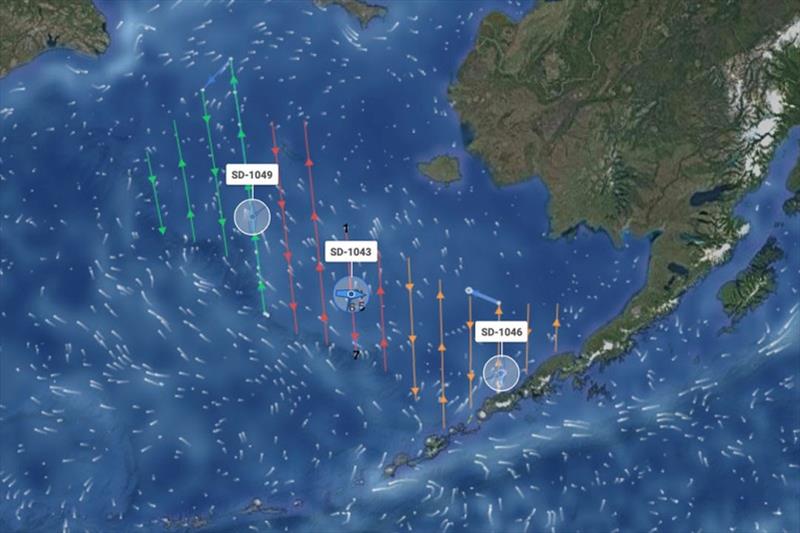
Autonomous Alaska Pollock Survey begins in the Bering Sea
by Saildrone 17 Jul 2020 10:21 UTC

Autonomous Alaska Pollock Survey begins in the Bering Sea © Saildrone
NOAA Fisheries traditionally uses research ships and chartered fishing vessels to perform fisheries surveys, but ship-based surveys in the Bering Sea were canceled this summer due to the COVID-19 pandemic.
While a few of the scheduled surveys will be skipped altogether, NOAA Fisheries' Alaska Fisheries Science Center (AFSC) called on Saildrone to perform the biennial acoustic survey of Alaska pollock.
Sailing more than 2,000 nautical miles across the North Pacific Ocean, three Saildrone unmanned surface vehicles (USVs) have arrived in the Bering Sea to begin the survey. Saildrone missions in the Arctic usually begin from Dutch Harbor on Unalaska Island, but travel restrictions meant that the vehicles had to be deployed from Saildrone headquarters in Alameda, CA.
The saildrones arrived at Unimak Pass, a 20-nautical-mile gap between Unimak Island to the north and Akun and Tigalda Islands to the south, in late June after approximately 40 days at sea. Once all three vehicles had entered the Bering Sea, they split up, each taking a third of the 600-nautical-mile-wide survey area between Alaska's Aleutian Islands and the western edge of the US exclusive economic zone (EEZ).
Each saildrone will complete a series of north-south transects moving from east to west; the mission is designed to mimic a typical ship survey as closely as possible. Each vehicle is equipped with a Simrad EK80 high-precision split-beam echo sounder to map fish abundance and estimate overall fish populations.
The 2020 Alaska pollock survey is Saildrone's seventh mission in the Arctic and first operational mission. Saildrone has worked with AFSC and NOAA's Pacific Marine Environmental Laboratory (PMEL) since 2015 to develop the vehicle's capabilities and refine the sensor payload on missions that studied the impacts of climate variability on northern fur seals, measuring carbon dioxide and the abundance of Arctic cod, tracking Alaska red king crab, and collecting observations for sea ice prediction and satellite algorithm development.
Once the mission is complete, the saildrones are expected to sail back to California.
Resources: "Pollock Survey Begins in Eastern Bering Sea," NOAA Fisheries Alaska Fisheries Science Center, July 15, 2020